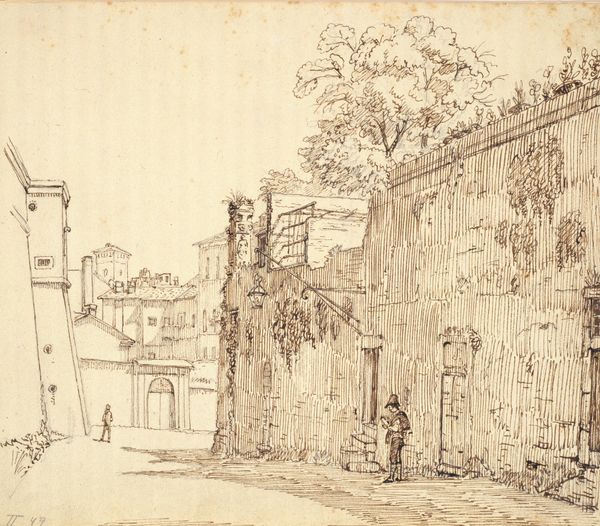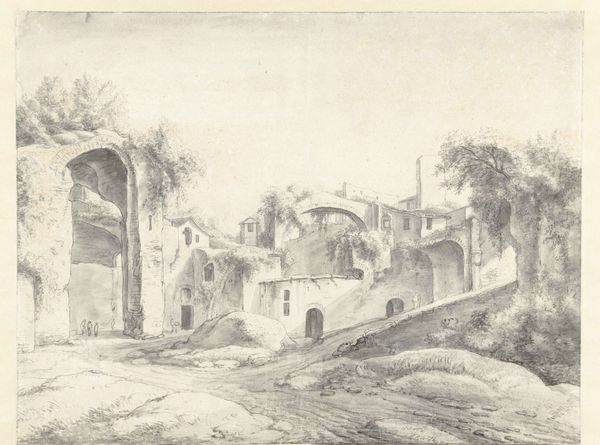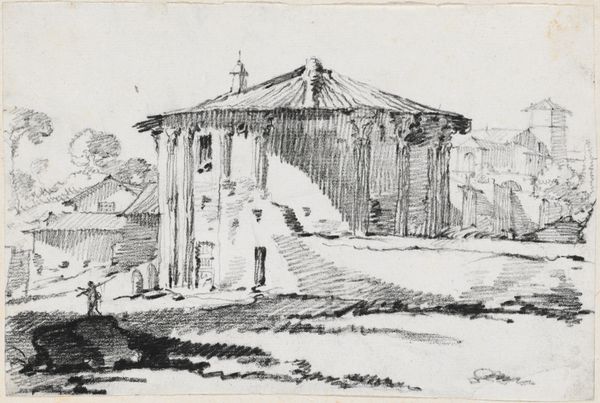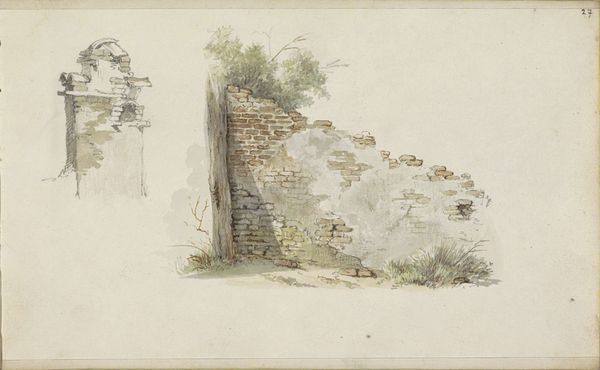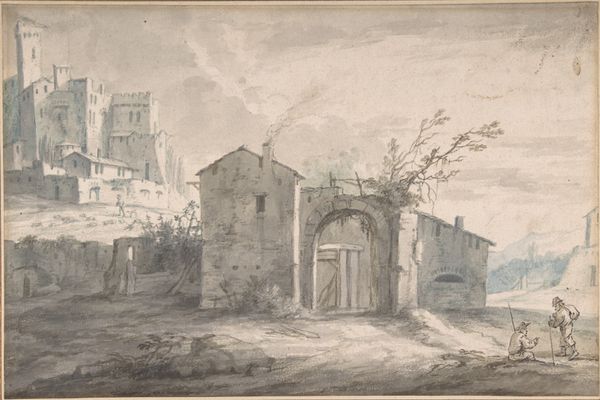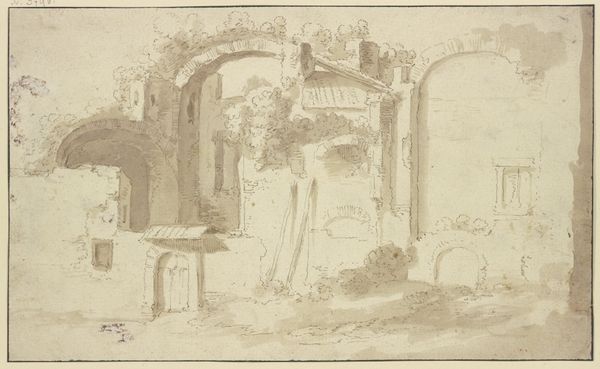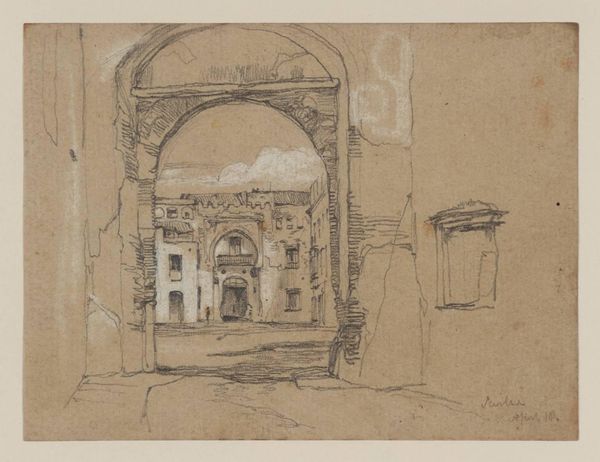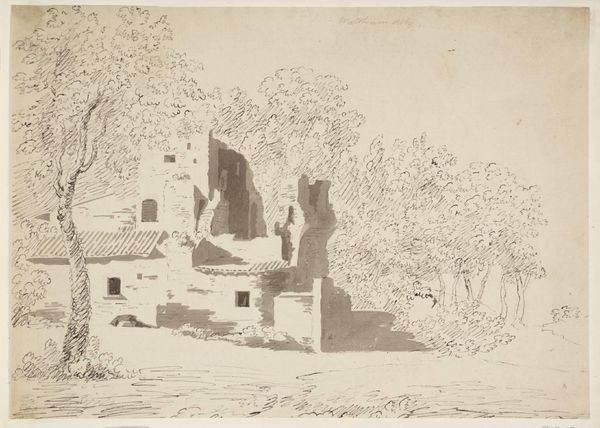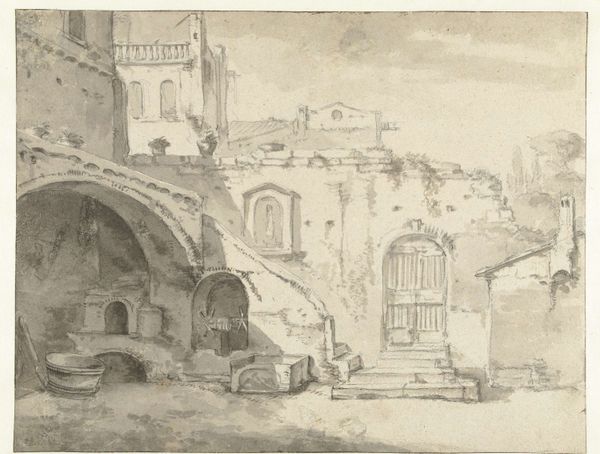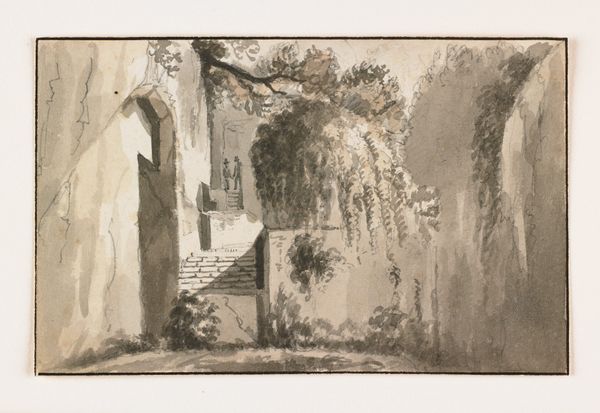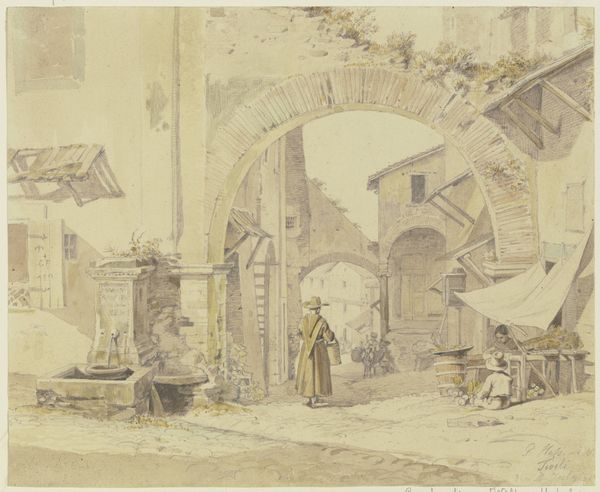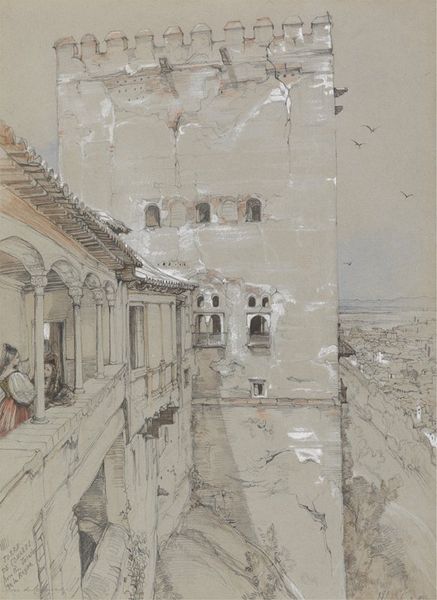
drawing, etching
#
drawing
#
etching
#
landscape
#
etching
#
history-painting
Copyright: Public Domain: Artvee
Curator: Claude-Joseph Vernet's "The Entrance to the Grotto at Posillipo," made around 1750, presents us with a study in sepia tones of a semi-ruined entrance. Editor: It’s immediately melancholic, isn’t it? All that ochre wash gives it a sort of decaying feel, like a faded memory. The composition draws your eye straight into that dark archway. Curator: Absolutely. Vernet wasn't just depicting a place; he was invoking classical precedent. Grottos were traditionally sites of refuge and contemplation, and that arch, mimicking ancient Roman architecture, suggests a link to that heritage. This work evokes cultural memory by linking to ideals of classical aesthetics and the passage of time. Editor: And he’s certainly interested in materials, juxtaposing natural forms—the overhanging vegetation, the sheer rock face—with the worked stone and decorative ironwork. You can almost feel the rough texture of the rock against the smooth finish of the architecture. How do you feel about this strange opposition? It seems like there might have been multiple attempts to make an appealing landscape over a significant period. Curator: Precisely. The tension between wild nature and human artifice speaks to the ongoing dialogue in landscape painting, even today. This speaks to an eighteenth-century fascination with the sublime. He sets it all against what I interpret as themes of mortality and decay. That dilapidated façade reinforces this idea, prompting questions of transience, human ambition, and resilience of the natural environment. Editor: From a material standpoint, you see the immediacy in the etching and drawing medium itself. The marks are unpolished, the washes quick. Vernet really emphasizes that landscape isn’t just 'there,' but made by hand and through distinct artistic practice. It asks about accessibility and the labor to maintain such beauty. It definitely presents me a more immediate idea of artistic decision-making than grander oil works might have. Curator: Yes, it makes this work stand out in Vernet's ouevre! This contrast invites an almost romantic dialogue with a classical setting. What stays in your mind after our analysis? Editor: For me, it's the direct engagement of the materials, which is surprisingly immediate considering its historical nature. Curator: Indeed. For me, it's how Vernet layers history and mood so economically to speak of things unseen.
Comments
No comments
Be the first to comment and join the conversation on the ultimate creative platform.
